Until about 20 years ago, 75 Squadron’s A-4K Skyhawks could still be heard screaming across New Zealand’s skies.
Then, suddenly, silence.
A political decision by Helen Clark’s Labour government in 2001 disbanded the Royal New Zealand Airforce’s fighter squadrons.
The last wing commander
What was a rich history echoing back to World War II had ended, something one squadron's last Wing Commander Nick Osborne, recalled at a reunion dinner at Classic Flyers Aviation Museum in Mount Maunganui on Saturday.
“I was thinking about how far we’ve come from. We stood up in a time of war, and all the people that have been through conflict since then, and we closed down in a time of peace.”
Osbourne, the uncle of All Black Glen Osborne, said he understood the decision at the time.
“It was easy to say there’s a fighter force that hasn’t done anything or hasn’t fought a war or gone into combat for anybody. Let’s get rid of it.”
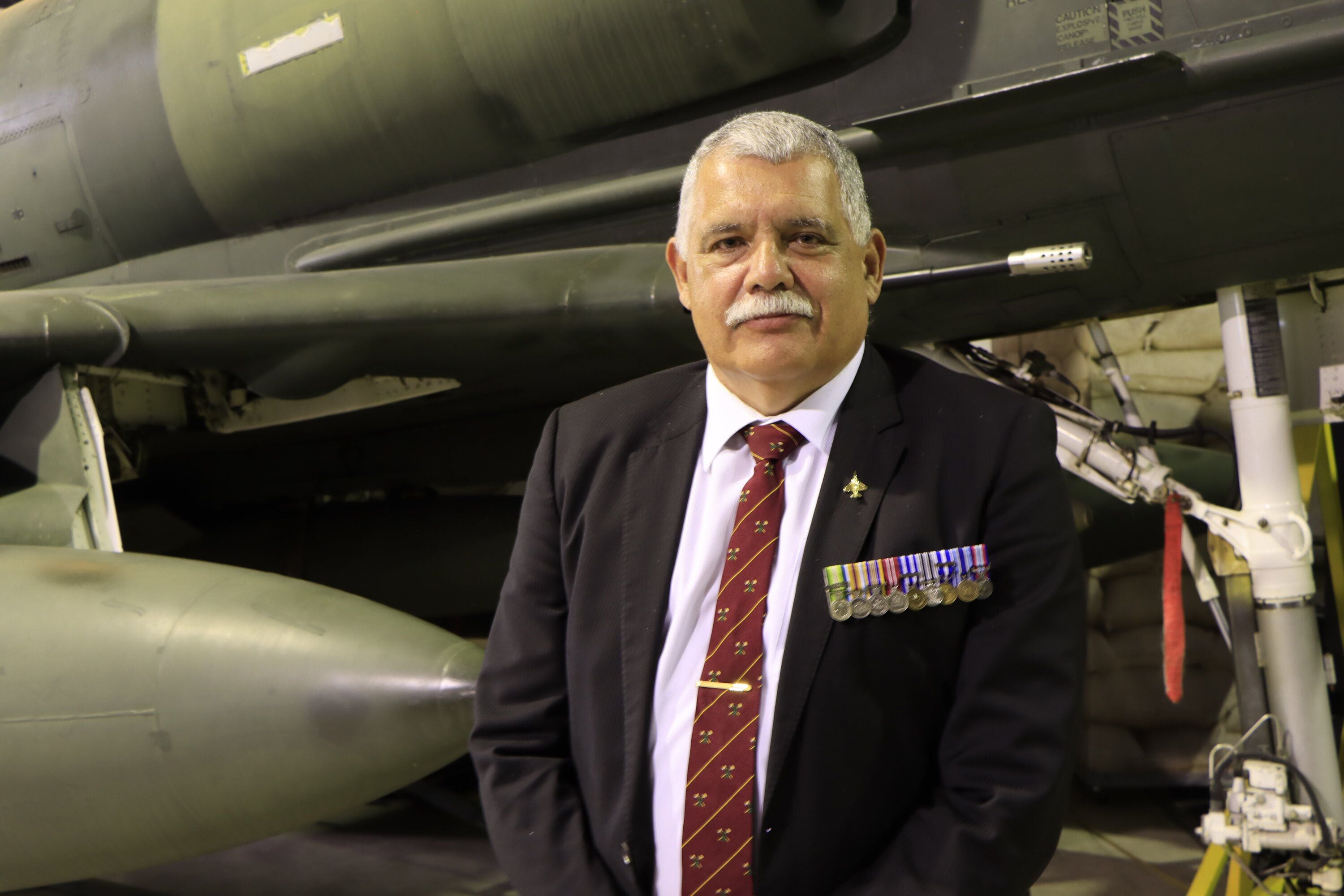
Former Wing Commander for 75 Squadron, Nick Osborne reflects on the legacy left behind by his former unit. Photo / Tom Eley
Wing Commander Osborne said 75 Squadron’s disbandment might have been prudent then, but the world was now in a ‘strategic autumn’.
“Think of the Game of Thrones. Winter is coming. I think we need to be prepared in both New Zealand and Australia for things to get worse,” he said.
Osborne left the RNZAF after the squadron was disbanded and joined the Royal Australian Air Force as a commodore.
He served in both Air Force’s for a total of 42 years.
“So, 20 years over here, and I’ve just done 22 years over there.”
Flying alone, with no safe return
The squadron was initially an RAF unit made up of mostly New Zealanders flying into Nazi Germany, where they would suffer the second highest number of casualties of any bomber squadron, research curator at the Air Force Museum of New Zealand, Simon Moody, said.
“They lost very heavily. But conversely, they also dropped something like the second amount of tonnage (bombs) on enemy territory.”
It all came at a cost. New Zealander bombers made up around 56% of all fatalities at bomber command, he said.
These men flew into enemy territory and performed many heroic feats; some never made it out alive, often alone without any protection.
“Most of the operations up to that point were done at night, so they were on their own, flying towards the target, sometimes in a group.”
“But mostly, on their own, and making their way independently to the target.”
They were joined by Australians, British, Canadians and South Africans, but the bulk of the squadron were Kiwis, said Moody.

Air to air view of a flight of five No. 75 Squadron Wellingtons, unknown location. Photo / RNZAF Official Air Force Museum
The most famous of that brave band is Sergeant James Allen Ward, a Victoria Cross recipient who, on the night of July 7, was the second pilot of a Wellington bomber.
The bomber had been part of a raid on Munster, Germany, and on the way home, passing over the Netherlands, a Messerschmitt 110-night fighter attacked their aircraft.
The rear gunner engaged the German aircraft, returning fire, but not before the Wellington’s starboard wing was struck. This caused a fire from a ruptured fuel pipe near the starboard engine and quickly spread.
Wellingtons had a unique design with a lightweight geodetic frame covered in fabric. This allowed the crew to create openings in the fuselage to fight fires, using fire extinguishers and, when those ran out, coffee from their flasks.
After this failed, Sergeant Ward devised an audacious plan. The RAF pilot volunteered to jump out of the plane to smother the fire, using an engine cover the crew had aboard as extra seat cushioning.
Initially, he had planned to climb onto the wing without a parachute to reduce the force of wind upon him, but his fellow airmen convinced him it was a bad idea.
With a rope from the onboard rescue dinghy tied around his waist, he climbed through the hatch on top of the Wellington and then put on his parachute.
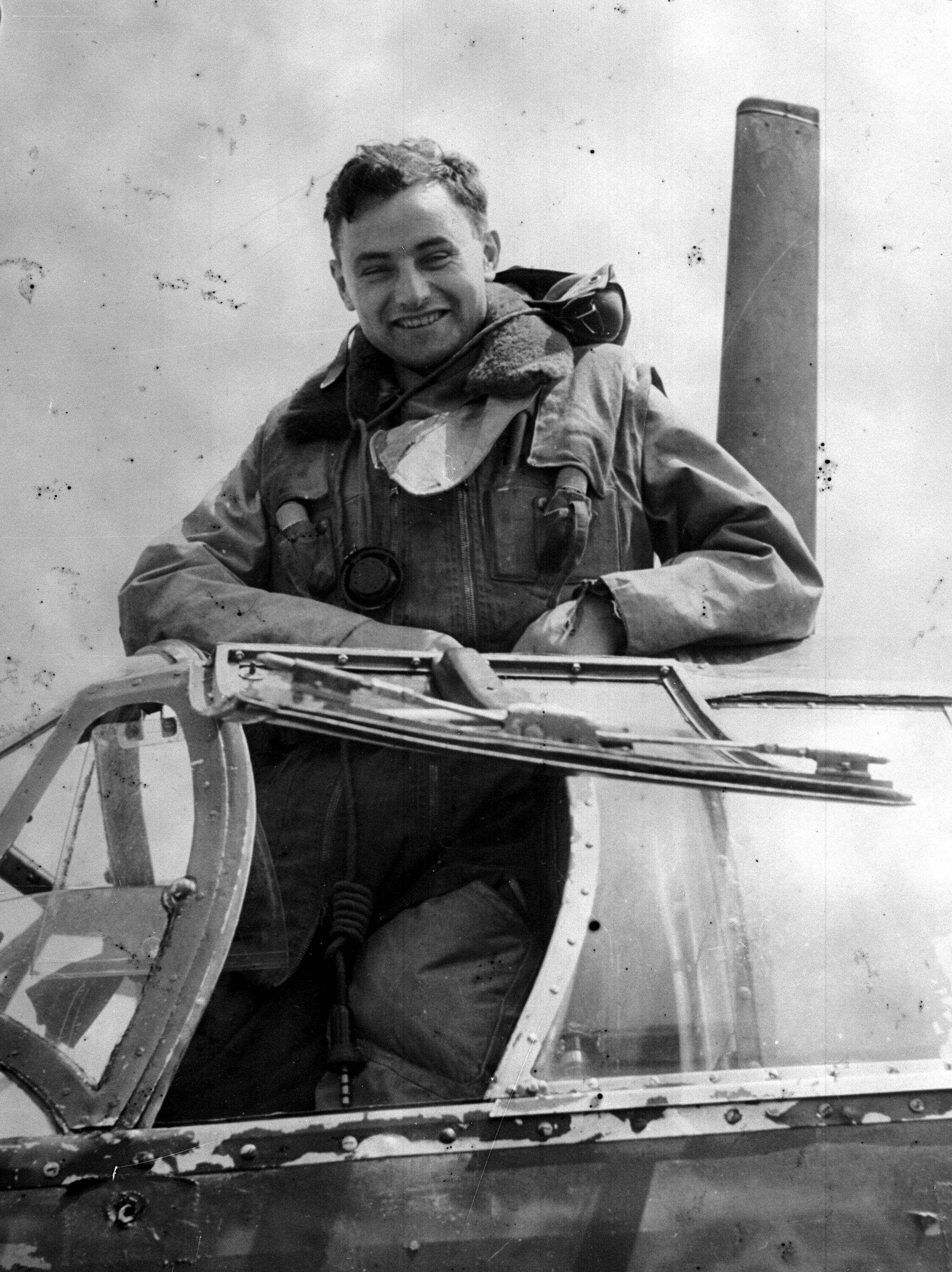
Sergeant James Allen Ward VC, standing in the cockpit of a No. 75 Squadron Wellington.
He positioned himself behind the engine to extinguish the wing fire, using the engine cover to shield himself from the flames.
Upon their arrival at RAF Station Feltwell, England, Ward was nominated for the Victoria Cross by Squadron Commanding Officer Wing Commander Cryus Kay.
“A safe landing was then made despite the damage sustained by the aircraft. The flight home had been made possible by the gallant action of Sergeant Ward in extinguishing the fire on the wing in circumstances of the greatest difficulty and at the risk of his life,” his citation said.
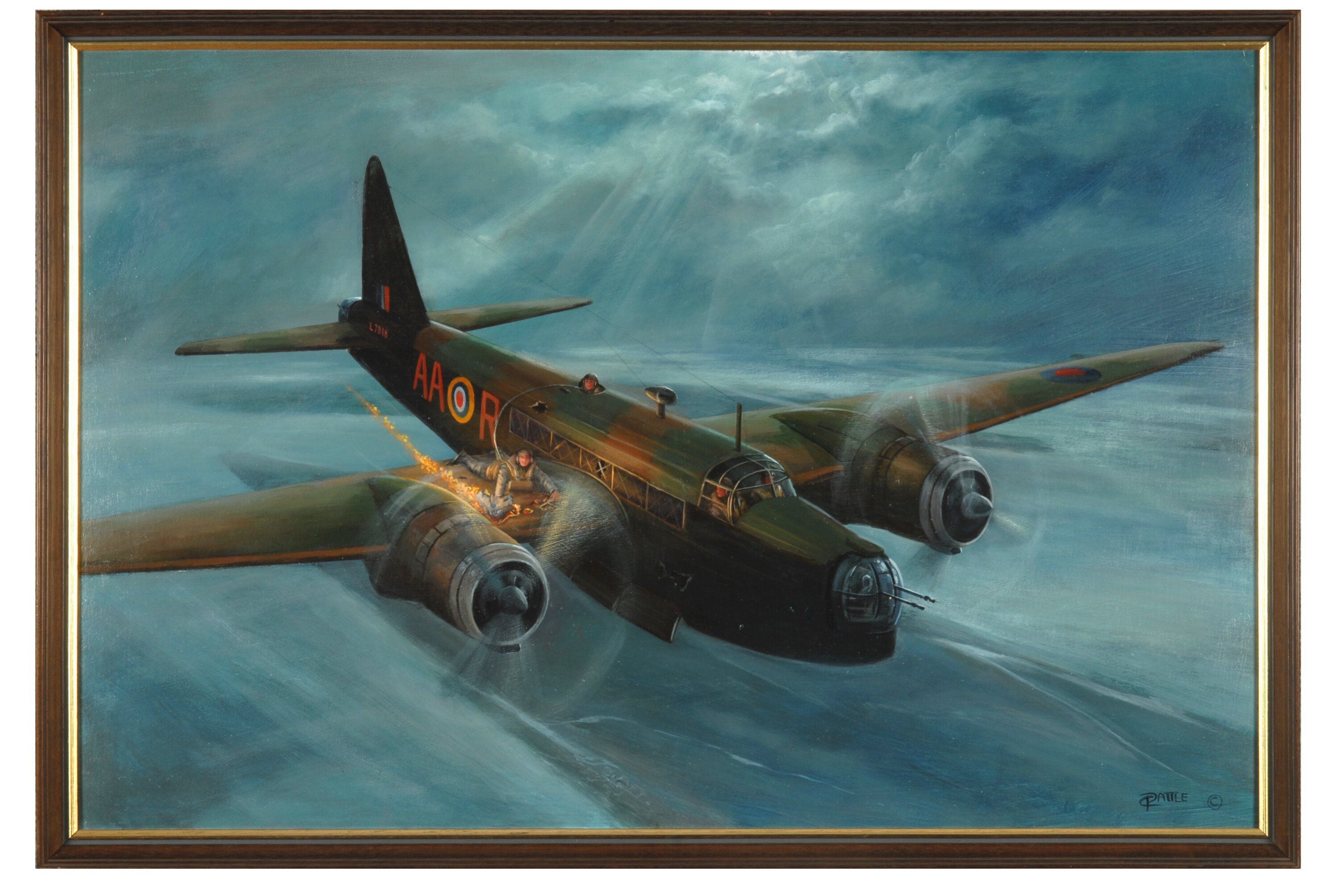
Oil painting by Colin Pattle. Sergeant James Ward earning his Victoria Cross.
Ward would not make it back home after being shot down over Hamburg just two months later on September 15, 1941, at the age of 22. He is buried at Hamburg Cemetery in Ohlsdorf, Germany.
Coming Home
The squadron flew in various bomber types during the war, including the Anson Mk1, the Wellington Mk1, Short Stirlings, the Lancaster bomber and the Lincoln MkII.
Towards the war’s end, the squadron was converted into part of the new Tiger Force, a very long-range bomber force proposed to fight the Japanese during the War of the Pacific.
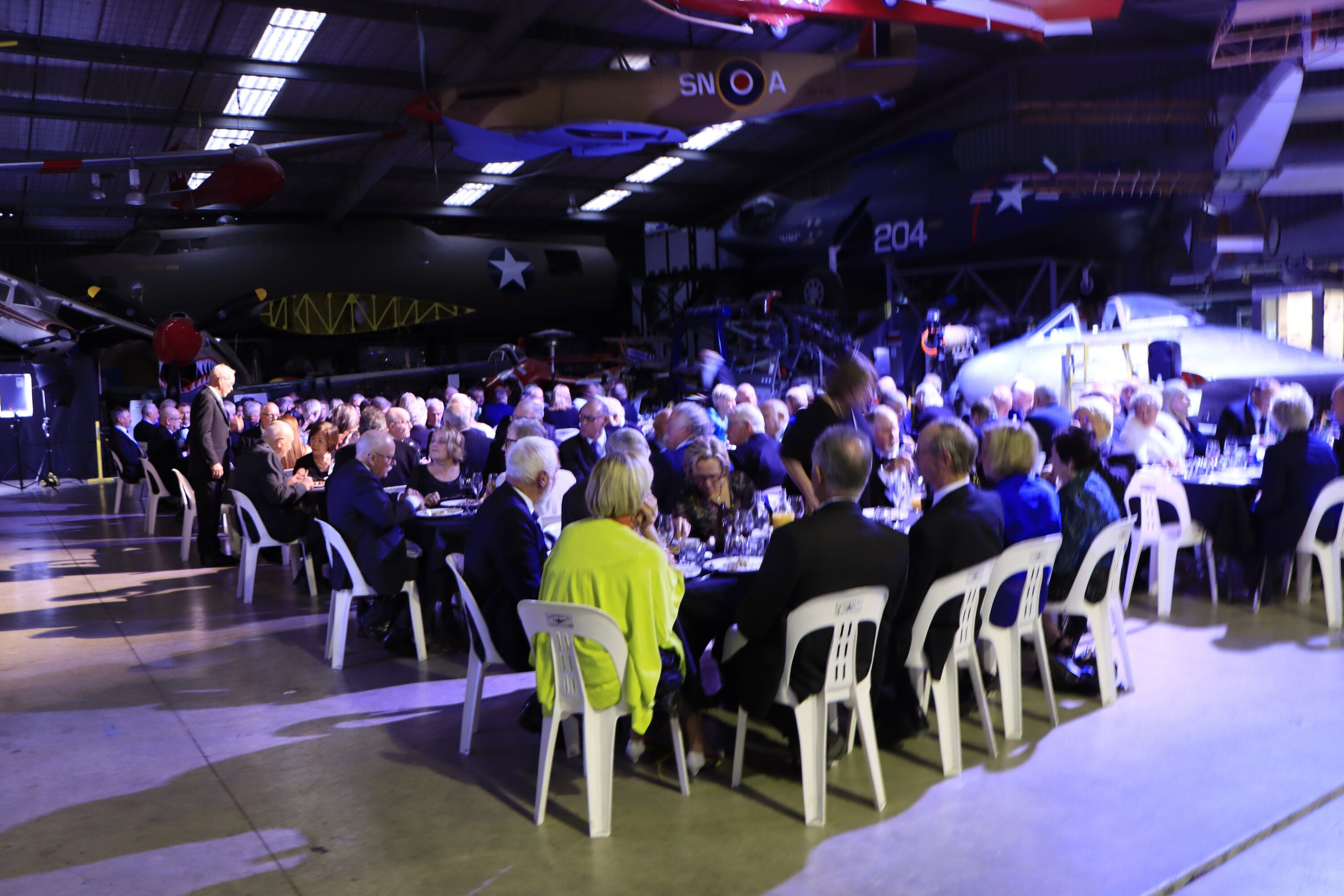
The 75 Squadron Association dinner at Classic Flyers in Tauranga. The first reunion was held in 1950. Photo / Tom Eley
The unit was disbanded after the bombings of Hiroshima and Nagasaki, and the Soviet invasion of Manchuria ended the war, and the squadron personnel were slowly shipped home.
“They were within the RAF system, but still working with New Zealand but not part of the New Zealand armed forces until after 1946,” Vice Air Marshal, CB OBE, John Hosie, said.
Vice Air Marshal Hosie began his service in the Royal New Zealand Air Force in 1959 and was involved in the Malayan Emergency, during which communists attempted to overthrow the colonial administration.
Hosie flew with 75 and 14 Squadron, eventually training flight instructors to teach other pilots to fly — something that wasn’t overly difficult, he said.
“You were dealing with experienced pilots,” he said.
“You did it on the basis that we were all beating the same drum. Otherwise, you’d have people having their own ideas.”
‘It’s what you do with the fear’
Like their fellow airmen of World War II, countless stories are held within the squadron’s collective memories, including that of Squadron Leader Jim Jennings, who played a key role in the Kin Nan incident in 1976.
The Kin Nan, a 50m squid boat, belonged to a Taiwanese company and arrived illegally in New Zealand waters in December 1975.
Two Royal New Zealand Navy (RNZN) patrol boats, the Taupo and the Hawea, eventually spotted the Kin Nan on March 30 1976. The vessel was ordered to stop but ignored the order.
Still, a flight Lieutenant, Jennings and fellow airmen were scrambled in their Skyhawks and dispatched from Oheka Air Force Base in Manawatu.
Two RNZN boats had tried in vain to get the squid boat to stop. Jennings and his squadron were ordered to track the ship’s movement, but it ignored warning shots from the Navy.
Then, with a squeeze of his trigger, Jennings halted the vessel.
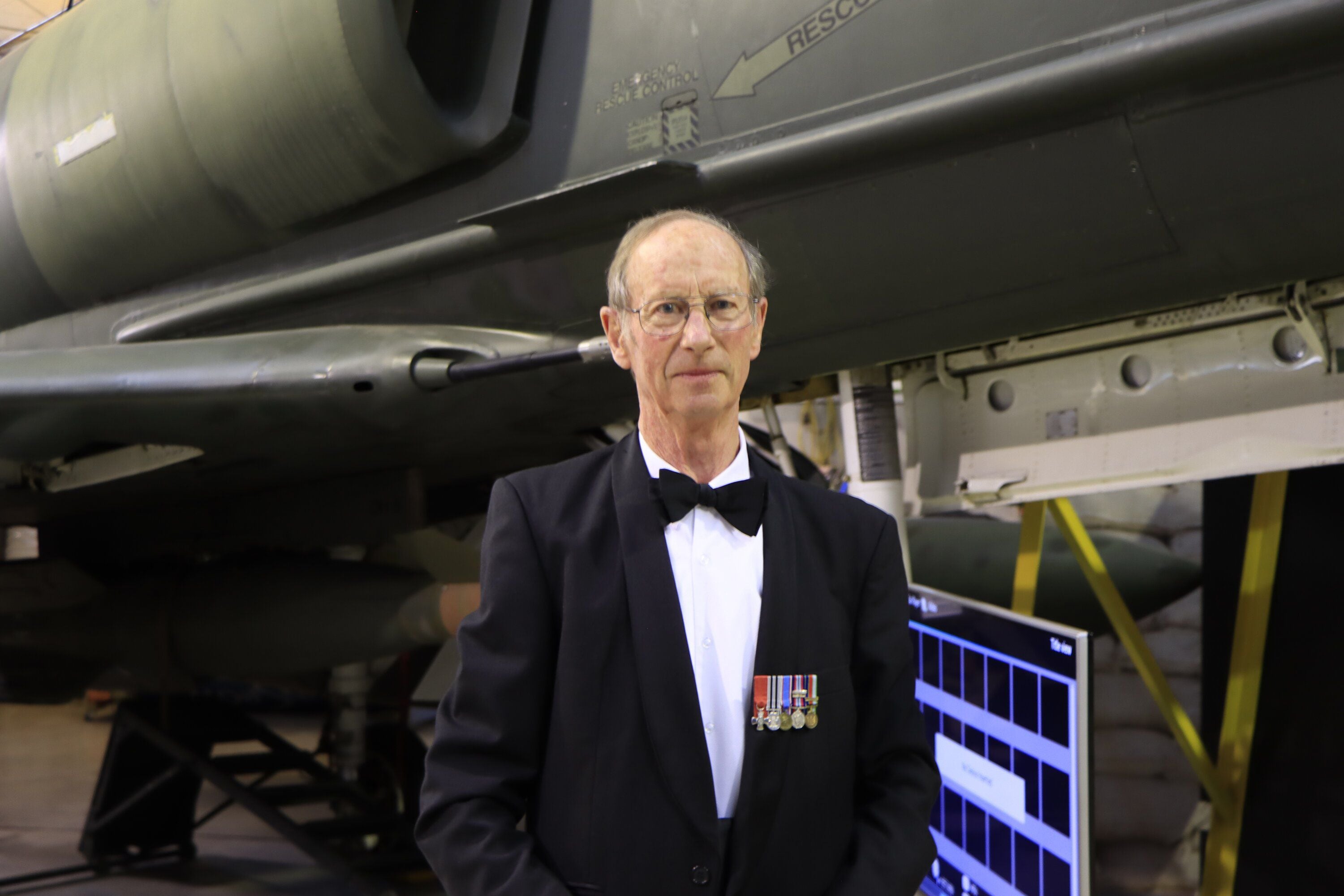
Former Squadron Leader, Jim Jennings was the only pilot to ever fire a shot in anger on New Zealand soil. He would be made Member of the New Zealand Order of Merit in 2010. Photo / Tom Eley
When he was sitting in the seat of the Skyhawk, it was never about being fearless, Jennings said.
“It was never about being unafraid. It was about what you did with the fear,” he said.
“It is about going and doing it anyway, even if you were afraid.”
It would be the only time a Skyhawk would fire a shot in anger on New Zealand soil.

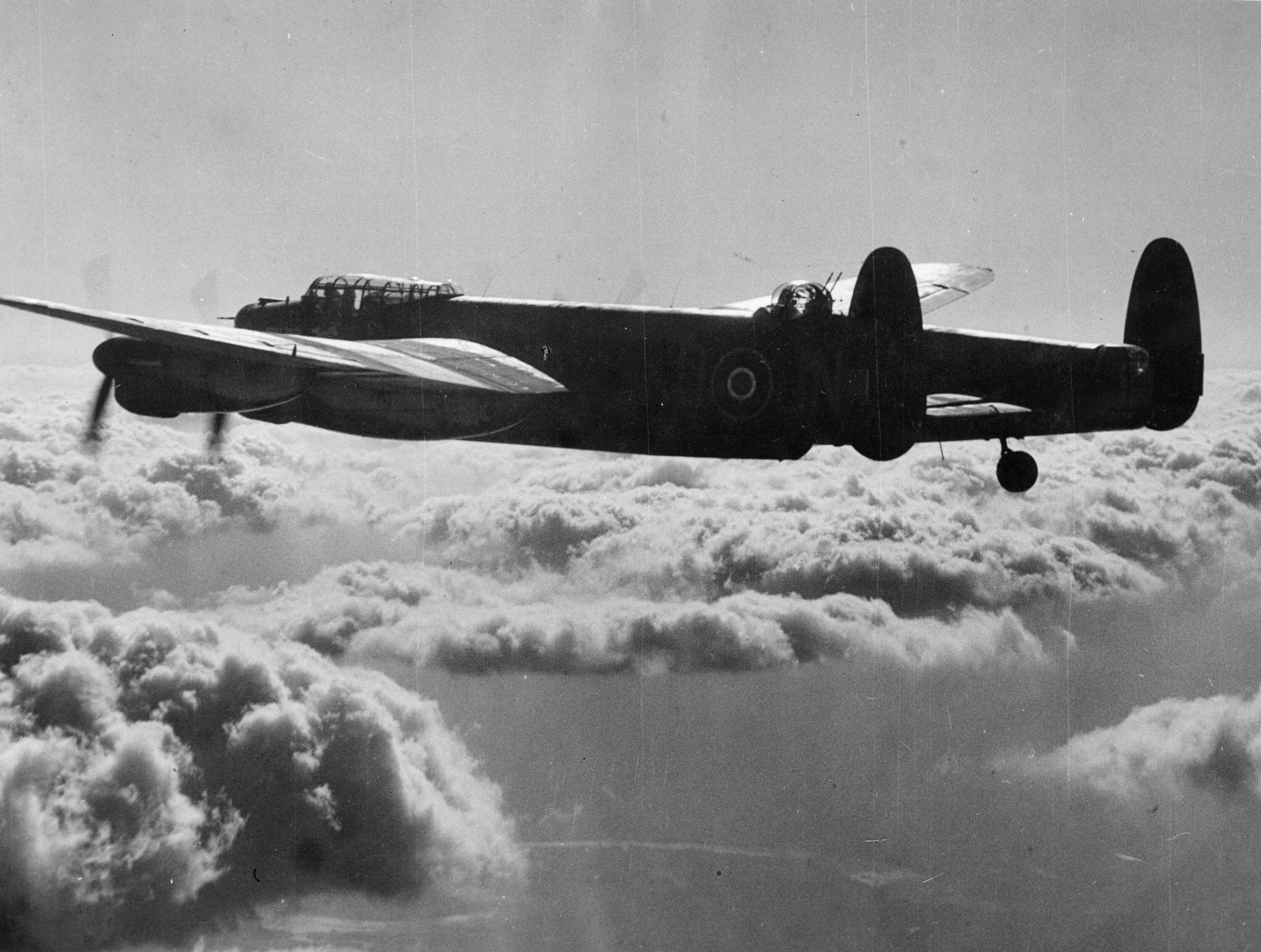

0 comments
Leave a Comment
You must be logged in to make a comment.